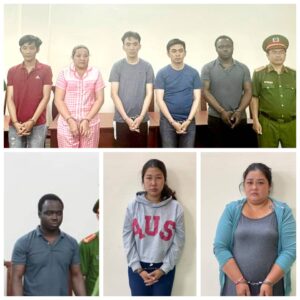
In the six days after top Chinese officials secretly determined they likely were facing a pandemic from a new coronavirus, the city of Wuhan at the epicentre of the disease hosted a mass banquet for tens of thousands of people, and millions began travelling through the city for Lunar New Year celebrations.
President Xi Jinping warned the public on the seventh day, Jan. 20. But by that time, more than 3,000 people had been infected during almost a week of public silence, according to internal documents obtained by The Associated Press and expert estimates based on retrospective infection data.
That delay from Jan. 14 to Jan. 20 was neither the first mistake made by Chinese officials at all levels in confronting the outbreak, nor the longest lag, as governments around the world have dragged their feet for weeks and even months in addressing the virus.
“This is tremendous,” said Zuo-Feng Zhang, an epidemiologist at the University of California, Los Angeles. “If they took action six days earlier, there would have been much fewer patients and medical facilities would have been sufficient. We might have avoided the collapse of Wuhan’s medical system.”
The Chinese government has repeatedly denied suppressing information in the early days, saying it immediately reported the outbreak to the World Health Organization.
“Those accusing China of lacking transparency and openness are unfair,” foreign ministry spokesperson Zhao Lijian said Wednesday when asked about the AP story.
China in mid-April has reported a total of 3,342 deaths from the virus among 82,341 cases, though it has faced questions about how it counts and reports cases. Around 3,000 people remain hospitalized with COVID-19, or are under isolation and monitoring for showing signs of the illness or testing positive but not displaying symptoms.
Other experts noted that the Chinese government may have waited on warning the public to stave off hysteria, and that it did act quickly in private during that time.
But what is clear, experts say, is that China’s rigid controls on information, bureaucratic hurdles and a reluctance to send bad news up the chain of command muffled early warnings. The punishment of eight doctors for “rumour-mongering,” broadcast on national television on Jan. 2, sent a chill through the city’s hospitals.
Here is a look at how the crisis played out in China from the internal documents:
Jan. 13: Thailand case raises concerns in China
For almost two weeks, China’s Center for Disease Control did not register any cases from local officials, internal bulletins obtained by the AP confirm. Yet during that Jan. 5-17 period, hundreds of patients were appearing in hospitals not just in the city of Wuhan but across the country.
Doctors and nurses in Wuhan told Chinese media there were plenty of signs that the coronavirus could be transmitted between people as early as late December. Patients who had never been to the suspected source of the virus, the Huanan Seafood Market, were infected. Medical workers started falling ill.
But officials obstructed medical staff who tried to report such cases. They set tight criteria for confirming cases, where patients not only had to test positive, but samples had to be sent to Beijing and sequenced. They required staff to report to supervisors before sending information higher, Chinese media reports show. And they punished doctors for warning about the disease.

An expert team dispatched from the central health agency on Jan. 8 failed to unearth any clear signs of human-to-human transmission in Wuhan. Yet during their stay, more than half a dozen doctors and nurses had already fallen ill with the virus, a retrospective China CDC study published in the New England Journal of Medicine would later show.
The teams looked for patients with severe pneumonia, missing those with milder symptoms. They also narrowed the search to those who had visited the seafood market — which was in retrospect a mistake, said Benjamin Cowling, an epidemiologist at the University of Hong Kong who flew to Beijing to review the cases in late January.
The muffling of warnings left top leaders in the dark. It took the first confirmed case outside China, in Thailand on Jan. 13, to jolt leaders in Beijing into recognizing the possible pandemic before them.

An internal memo cites China’s top health official, Ma Xiaowei, as saying the situation had “changed significantly” because of the possible spread of the virus abroad.
Jan. 15: Warning to regions, with a caveat
The memo, on a secret Jan. 14 teleconference held by Ma, shows that Chinese officials were deeply alarmed and had come to a much grimmer assessment than they were letting on in public.
For weeks, officials had stuck to the line that there was “no clear evidence of human-to-human transmission,” calling the disease “preventable and controllable.”
But during the teleconference, Ma said that “clustered cases suggest human-to-human transmission is possible.”
“The epidemic situation is still severe and complex, the most severe challenge since SARS in 2003, and is likely to develop into a major public health event,” the memo cites Ma as saying.
Like Our Story ? Donate to Support Us, Click Here
You want to share a story with us? Do you want to advertise with us? Do you need publicity/live coverage for product, service, or event? Contact us on WhatsApp +16477721660 or email Adebaconnector@gmail.com








